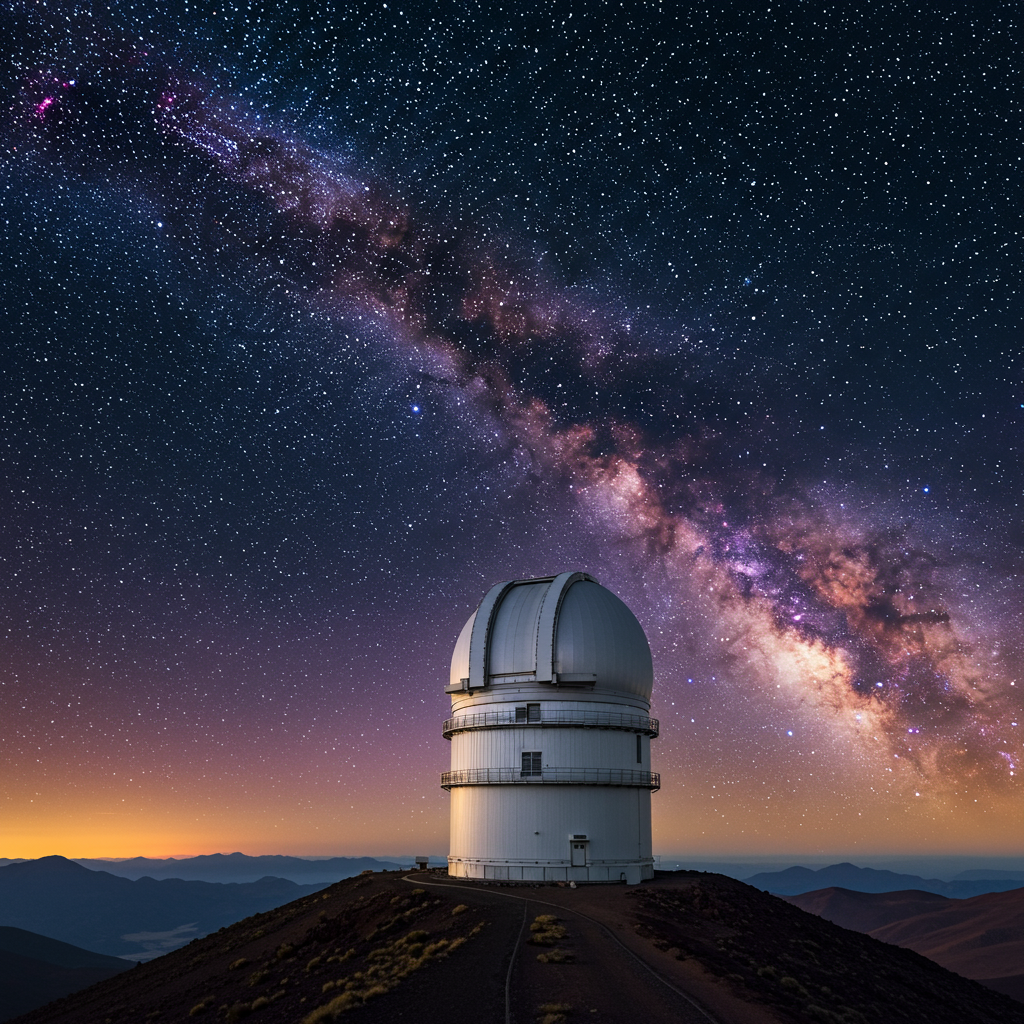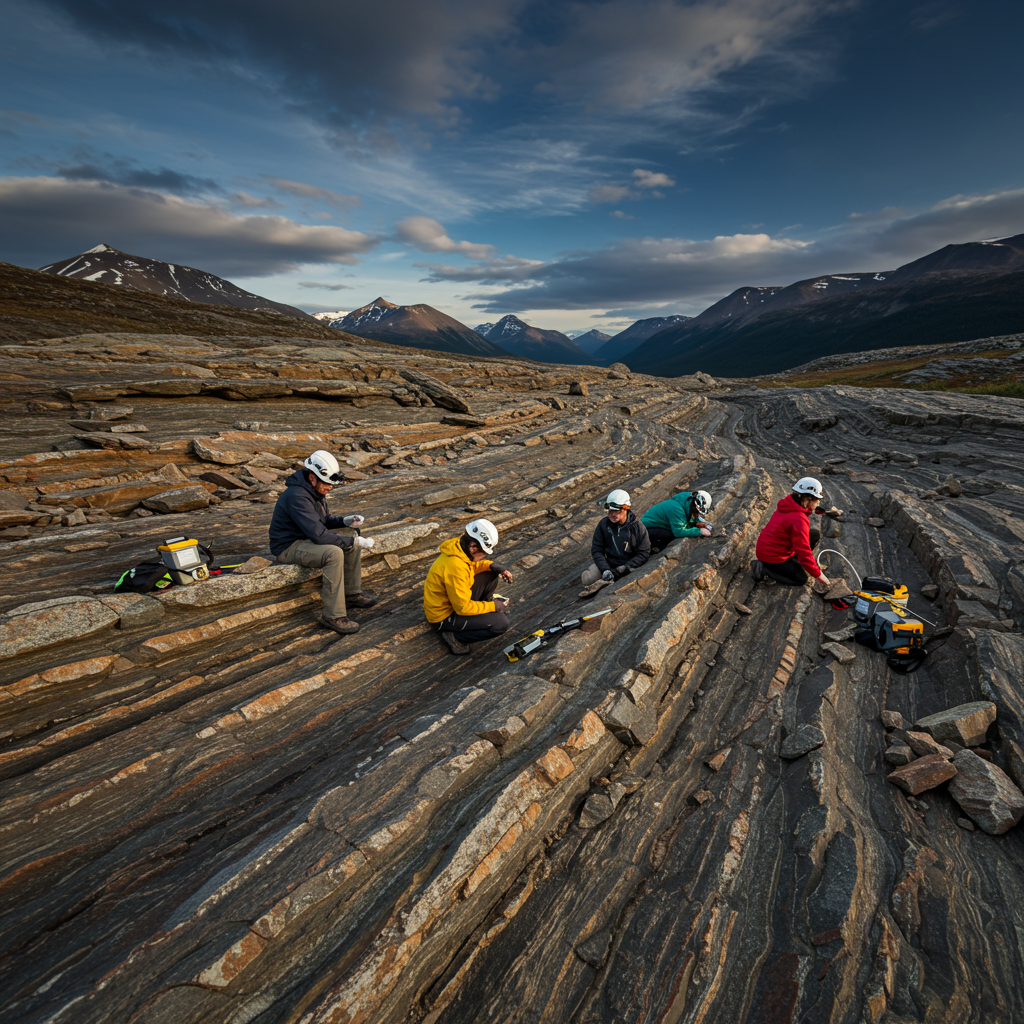The Vera C. Rubin Observatory, perched high on a Chilean mountain, is on the cusp of unveiling an unprecedented view of the cosmos. After years of construction and anticipation, this revolutionary facility, equipped with the world’s largest digital camera, is poised to begin a decade-long mission to survey the southern night sky with unparalleled detail and speed.
Scientists globally are buzzing with excitement, likening the potential impact of Rubin’s first images and data to the significance of the initial glimpses from the James Webb Space Telescope. This project represents a monumental step in astronomy, promising to reshape our understanding of everything from distant galaxies to objects right here in our cosmic backyard.
A Glimpse into the Future of Astronomy
Officially known as the NSF–DOE Vera C. Rubin Observatory, this US-funded project sits 2,647 metres above sea level on Cerro Pachón in northern Chile. This high-altitude, dry location provides minimal atmospheric interference, offering a crystal-clear view of the night sky. Construction began in 2015, culminating in a facility designed specifically to address some of astronomy’s biggest mysteries.
At the heart of the observatory is the colossal LSST Camera (Legacy Survey of Space and Time Camera). This instrument is not just big – it’s the largest digital camera ever built for astronomy. Weighing 3,000 kilograms and about the size of a small car, it boasts an astounding 3,200 megapixels of resolution, roughly equivalent to 260 modern smartphones combined. Coupled with an 8.4-meter primary mirror and an innovative three-mirror telescope design, the camera can capture incredibly detailed images across a vast expanse of sky.
Each exposure from the LSST Camera will cover an area approximately 45 times the size of the full moon. Using six different coloured filters, it can image light across various spectra, from ultraviolet beyond human vision to infrared. This capability, combined with its rapid pace, is key to its mission.
The Legacy Survey of Space and Time (LSST)
Rubin’s core mission is the 10-year Legacy Survey of Space and Time (LSST). This involves repeatedly scanning the entire Southern Hemisphere sky, capturing images every few seconds. The telescope is engineered for remarkable agility, able to reposition and stabilize in just five seconds between observations. This allows it to revisit the same patch of sky approximately every three nights.
The goal is to build an ultra-wide, ultra-high-definition time-lapse record of cosmic evolution. Imagine a decade-long, high-speed movie of the universe changing before our eyes. The sheer volume of data generated is staggering – estimated at 20 terabytes every single night.
A crucial operational feature is the observatory’s ability to immediately compare new images of a sky region to previous ones. If any change is detected – a star flaring up, an asteroid moving, a distant galaxy shifting – it triggers an instant alert. Scientists anticipate these alerts could number around 10 million per night, transforming transient astronomy. Handling this torrent of data requires advanced software and processing capabilities, including machine learning, with Australian researchers playing a significant role in developing the necessary systems.
Unlocking the Universe’s Deepest Secrets
The Vera C. Rubin Observatory was born out of astronomers’ quest to solve the mystery of dark matter, the invisible substance that makes up a large portion of the universe. Named after astronomer Vera Rubin, whose pioneering work provided early evidence for dark matter, the observatory is uniquely equipped to study both dark matter and the even more mysterious dark energy.
LSST will map the distribution of dark matter across the cosmic web using gravitational lensing – the way massive objects warp light from more distant sources. By identifying billions of lensed galaxies, Rubin will provide unprecedented constraints on the dark matter distribution and properties.
For dark energy, which is driving the accelerating expansion of the universe, Rubin will measure the shapes and properties of billions of galaxies across vast cosmic distances and times. This will allow scientists to trace the universe’s expansion history and test whether dark energy’s strength has changed over time, potentially challenging the standard cosmological model.
Beyond the Dark: A Universe of Discoveries
While the “dark universe” is a primary focus, Rubin’s capabilities extend across nearly every field of astronomy:
Mapping Galaxies and Cosmic Structures: Rubin is expected to catalogue around 20 billion previously unknown galaxies, mapping their positions within the filamentary cosmic web that spans the universe. It will also shed light on faint features like intracluster light drifting between galaxies and trace stellar streams left behind by destroyed dwarf galaxies orbiting the Milky Way.
Monitoring the Dynamic Sky: The rapid, repeated scans are perfect for catching fleeting events. This includes exploding supernovas, quasars, gamma-ray bursts, and even stars being consumed by black holes (tidal disruption events). Scientists will no longer rely on chance observations for many of these phenomena.
Exploring Our Solar System: The observatory will revolutionize our understanding of our own cosmic neighborhood. It’s predicted to increase the number of known asteroids and comets by a factor of 10 to 100. This includes discovering thousands of new objects in the distant Kuiper Belt (estimated 40,000) and, crucially, identifying potentially hazardous near-Earth objects (NEOs) larger than 140 meters with much earlier warning times. This planetary defense capability is vital, offering more time for potential mitigation strategies if a collision threat is identified. It will also contribute significantly to the ongoing search for the elusive Planet Nine.
Discovering Hidden Neighbors: Rubin’s sensitivity will allow it to find thousands of faint brown dwarfs (“failed stars”) in the Milky Way, boosting the known catalogue significantly and aiding studies of star formation. It will also discover dim dwarf galaxies orbiting our own galaxy and may detect exoplanets via transit methods.
The sheer depth achievable by stacking multiple images over time will allow Rubin to peer further into the cosmos than previously possible in a wide-field survey.
A Global Effort
The Rubin Observatory is a testament to international collaboration. While primarily funded by the US, it sits on Chilean soil, and scientists from around the world are poised to utilize its data. Australia, for instance, has contributed vital software development to handle the massive data flow. In return, Australian astronomers have secured immediate access to the data as it’s generated, ensuring they can contribute significantly to the wave of discoveries.
Catch the First Light
The wait for Rubin’s first images is nearly over. The initial snapshots are scheduled to be unveiled very early on Tuesday morning, June 24th, Australian time (corresponding to Monday, June 23rd in the Americas and Europe).
Viewing these images in their full glory is a challenge – a single image at full resolution would require the display area of approximately 400 ultra-HD TVs! While the images will be available online, many institutions, like planetariums and universities, are hosting watch parties specifically designed to showcase the incredible detail and scale using specialized displays. These events often include expert talks and allow enthusiasts to share the excitement of witnessing a new era of astronomical discovery unfold.
The official LSST survey mission is set to begin a little later this year, but researchers anticipate that groundbreaking results will start emerging relatively quickly, potentially within the first 12 months of operations. The Vera C. Rubin Observatory is not just building a map of the universe; it’s creating a dynamic, living portrait that promises to reveal secrets we haven’t even begun to imagine.




